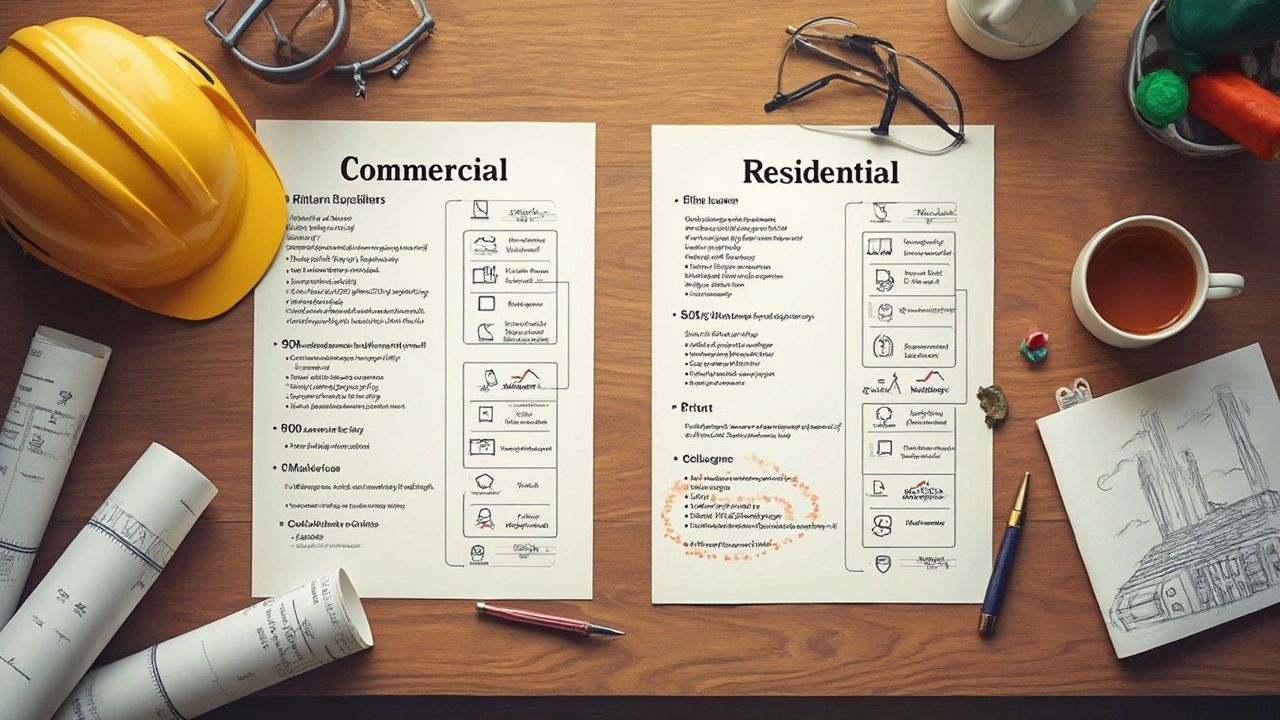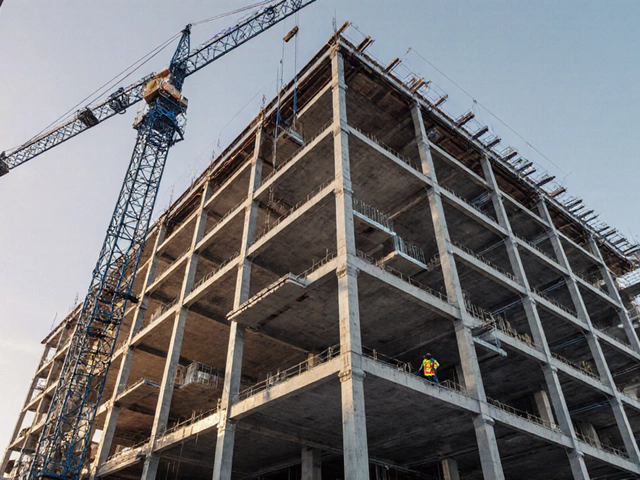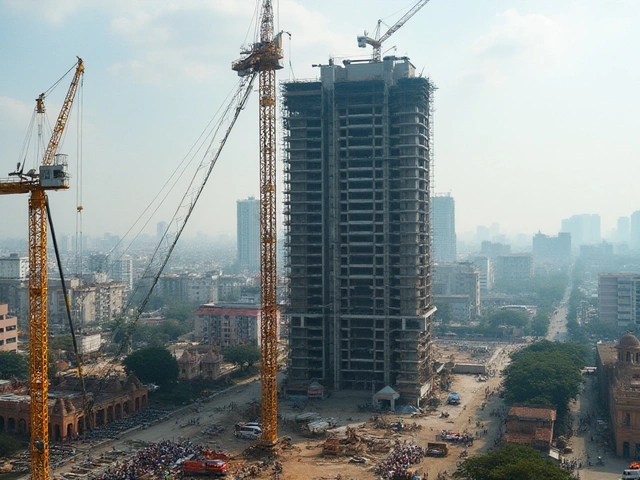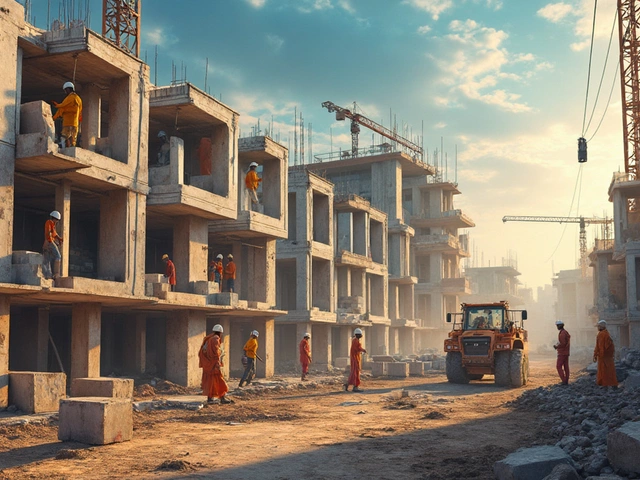Picture this: You’re about to start a construction project, but it’s not just a home in the suburbs—it’s a commercial site, let’s say a busy new coffee shop in town. The rules, the process, even the paperwork—almost everything changes.
Right off the bat, commercial projects pile on red tape. The permits? Not just harder to get, but there’s more of them. Cities care a lot more when the public might walk through your building. Don’t forget about inspections for fire safety, accessibility, and energy efficiency. Blow those off and you’re opening the door to huge fines, or worse, being shut down before your first sale.
In the commercial world, every mistake costs more, not just in money, but in delays and headaches. Want to keep the project moving? Stay organized with the paperwork and always double-check what local codes demand before swinging the first hammer. Planning ahead is the game-changer here.
- Regulations and Permits: Twice the Paperwork, Triple the Stakes
- Design, Scale, and Budgets: Two Different Ballgames
- Teamwork and Project Management: Who Runs the Show?
- Maintenance and Longevity: Building for Now vs. Forever
Regulations and Permits: Twice the Paperwork, Triple the Stakes
If you think getting a permit for a backyard deck is a pain, wait until you see a commercial construction application. The paperwork stack can look more like a phone book than a form. Local authorities throw a longer list of rules at commercial projects because these buildings affect the public, not just a family or two.
For starters, commercial jobs have to follow stricter building codes. Forget about a one-size-fits-all rulebook. You’ve got fire safety, accessibility for people with disabilities (think ramps or elevators), energy efficiency benchmarks, and even parking requirements—all to check off before a single worker shows up.
Inspections are a big deal, too. Commercial buildings go through multiple rounds. Here’s a basic run-down:
- Site inspection before digging.
- Foundation check after pouring concrete.
- Electrical and plumbing approvals as the build goes up.
- Final inspection before anyone can open the doors.
If you’re late or mess up paperwork, the city can put everything on hold. One survey in 2023 found that over 60% of commercial builds in the U.S. experience delays caused by permit issues. That’s not just annoying—that’s weeks or months of lost business and rising costs.
| Permit Type | Residential | Commercial |
|---|---|---|
| Permit Wait Time | 2-4 weeks | 2-6 months |
| Number of Inspections | 2-4 | 5-10+ |
| Accessibility Requirements | Rare | Always |
| Fire Safety Upgrades | Basic | Advanced (sprinklers, alarms) |
There’s no shortcut here—double-check your city’s commercial permit checklist, or you’ll pay for it in both time and money. A good tip: get a permit expediter to speed up the process. They know who to call and what paperwork officials look for, so you don’t end up stuck in a sea of red tape.
Design, Scale, and Budgets: Two Different Ballgames
Designing a commercial project is like playing in the big leagues compared to residential. Commercial buildings, like offices, retail stores, or warehouses, have to handle more foot traffic, bigger equipment, and often, strict zoning requirements. Think elevators, fire escapes, loading docks—the list goes on. Residential construction, whether it’s single-family homes or small apartments, usually keeps it simple and cozy without those extra features.
Let’s talk about size. Commercial sites are often huge—thousands or even hundreds of thousands of square feet. You’re not just building more rooms; you’re working with more complex layouts, utilities, and safety systems. Residential projects, on the other hand, usually tap out by the time you get to a handful of units or a small block of houses.
Here’s where budgets really start to look different. Commercial construction costs can hit anywhere from $100 to $400 per square foot for standard buildings, and much higher for hospitals or custom spaces. Residential typically falls in the $100-$200 per square foot range. Why the gap? Commercial projects demand beefier materials, stronger framing, larger HVAC systems, and more expensive fire and security features. Plus, you need licensed specialists for everything—no room for cutting corners.
Deadlines also get wild in commercial construction. Businesses can’t afford to sit empty, so delays can end up costing huge amounts in lost revenue. Builders have to juggle the schedule, troubleshooting on the fly when delays hit. In contrast, a delay on a single-family house is frustrating, but it rarely threatens someone’s income stream.
If you’re budgeting, add a buffer—commercial builds often run over by 10-20% just because of the unpredictable stuff. Weather, supply chain hiccups, even city inspectors missing an appointment can throw things off. Plan for the unexpected and always ask your builder exactly what’s covered in your budget estimate.

Teamwork and Project Management: Who Runs the Show?
In residential jobs, you see a small crew: usually one general contractor, maybe a couple subcontractors, and that’s mostly it. But jump over to commercial construction and suddenly there’s a crew for everything—HVAC, plumbing, electrical, safety, site management, and usually a project manager whose whole job is just wrangling teams and keeping the chaos under control.
This bigger team calls for more structure. Commercial projects run on strict timelines and tight budgets. If one group falls behind, the whole schedule suffers—think of it like a domino effect, only the dominoes are expensive and on a deadline. That's why you see project managers using software like Procore or Buildertrend to track progress, budgets, and who’s doing what. Everyone’s looped in, from architects to city inspectors.
The stakes get higher with commercial builds. A hospital or office building doesn’t just serve a family—it may serve thousands every day. That means more people to coordinate, more details to manage, and a lot less room for mistakes. According to a Dodge Data & Analytics study, over 65% of commercial jobs use formal project management systems, compared to about 30% in residential. Without good management, costs and timelines spiral fast.
- Commercial sites often hold regular team meetings—sometimes daily.
- Schedules are planned months in advance, sometimes down to the hour.
- Teams include specialists like code consultants and compliance officers who you almost never see in small-scale home building.
| Project Type | Average Crew Size | Uses Project Management Software |
|---|---|---|
| Residential | 5-15 | Rarely |
| Commercial | 30+ | Frequently |
The biggest tip for working on a commercial construction team? Communication is king. Get used to daily updates, progress reports, and endless checklists. This keeps surprises to a minimum and helps everyone stay on the same page. Missing a beat can mean the difference between finishing under budget—or scrambling to explain why you’re three months behind.
Maintenance and Longevity: Building for Now vs. Forever
Here’s where commercial construction really pulls ahead: the mindset is always about the long haul. Residential homes get built to last a few decades without major fixes, mostly relying on the homeowner for basic maintenance. But commercial buildings, like offices or retail stores, have to put up with constant foot traffic, the wear and tear from hundreds of people daily, and tight safety standards. Repairs can’t be skipped—they’re scheduled, tracked, and often required by local laws.
Commercial spaces need high-end materials, more robust systems, and a regular maintenance routine. Think more like an athlete in training, not just getting by day-to-day. Ever wonder why the flooring in grocery stores seems indestructible? That’s because commercial-grade finishes and fixtures are made to stand up to abuse for years, maybe even decades.
- Commercial HVAC systems get professional checkups multiple times a year.
- Elevators and fire alarms are under service contracts with strict inspection intervals.
- Residential maintenance is often reactive—fix it when it breaks. Commercial is proactive—fix it so it doesn’t break during business hours.
The life expectancy for commercial builds is usually 50 years or more. Commercial insurance companies often require proof of regular inspection and maintenance. Here’s a quick look at typical longevity and maintenance schedules:
| Building Type | Average Lifespan | Main Maintenance Tasks | Inspection Frequency |
|---|---|---|---|
| Residential | 20-40 years | Roof/shingles, paint, HVAC filter change | Annually / when issues arise |
| Commercial | 40-100 years | HVAC, elevators, emergency exits, sprinkler system | Quarterly/Semi-Annual/Required by code |
If you skip required maintenance in a commercial construction setting, you don’t just risk surprise repairs—you can get fined, lose your tenant, or even face lawsuits. That’s why everyone from property managers to janitors needs to be on board with a tight maintenance schedule.



Write a comment